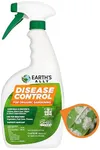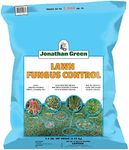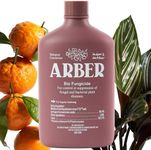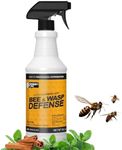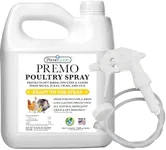Buying Guide for the Best Fungus Treatment For Plants
Choosing the right fungus treatment for plants is crucial to ensure the health and vitality of your garden. Fungal infections can cause significant damage to plants, so selecting an effective treatment is essential. When picking a fungus treatment, consider the type of plants you have, the specific fungal issue, and the environmental conditions. Here are some key specifications to help you make an informed decision.Active IngredientThe active ingredient in a fungus treatment is the chemical component that targets and eliminates the fungus. This spec is important because different active ingredients are effective against different types of fungi. Common active ingredients include copper, sulfur, and neem oil. Copper-based treatments are effective against a wide range of fungal diseases, sulfur is good for powdery mildew, and neem oil is a natural option that works well for various fungal issues. Choose an active ingredient based on the specific fungal problem you are dealing with and the type of plants you are treating.
Application MethodThe application method refers to how the fungus treatment is applied to the plants. This is important because it affects the ease of use and the coverage of the treatment. Common methods include sprays, dusts, and soil drenches. Sprays are easy to apply and provide good coverage for leaves and stems, dusts are useful for treating large areas quickly, and soil drenches are effective for root-related fungal issues. Choose an application method that suits your comfort level and the specific needs of your plants.
Spectrum of ControlThe spectrum of control indicates the range of fungal diseases that the treatment can address. This is important because some treatments are broad-spectrum, meaning they can treat multiple types of fungi, while others are narrow-spectrum, targeting specific fungal issues. Broad-spectrum treatments are useful if you are dealing with multiple fungal problems or if you are unsure of the exact type of fungus. Narrow-spectrum treatments are more effective for specific fungal diseases. Choose a spectrum of control based on the variety and severity of fungal issues in your garden.
Plant SafetyPlant safety refers to how safe the treatment is for the plants you are treating. This is important because some treatments can cause phytotoxicity, which is damage to the plants. Look for treatments that are labeled as safe for the specific types of plants you have. If you are treating edible plants, ensure the treatment is safe for use on food crops. Choose a treatment that is gentle on your plants while still being effective against the fungus.
Environmental ImpactThe environmental impact of a fungus treatment refers to how it affects the surrounding environment, including beneficial insects, soil health, and water sources. This is important because some treatments can be harmful to non-target organisms and the ecosystem. Look for treatments that are labeled as environmentally friendly or organic if you are concerned about the impact on the environment. Choose a treatment that balances effectiveness with minimal environmental impact.
Frequency of ApplicationThe frequency of application refers to how often you need to apply the treatment to keep the fungus under control. This is important because it affects the maintenance required and the overall effectiveness of the treatment. Some treatments need to be applied weekly, while others may only need to be applied once a month. Choose a frequency of application that fits your schedule and the severity of the fungal issue. More frequent applications may be necessary for severe infestations, while less frequent applications may be sufficient for preventive measures.



